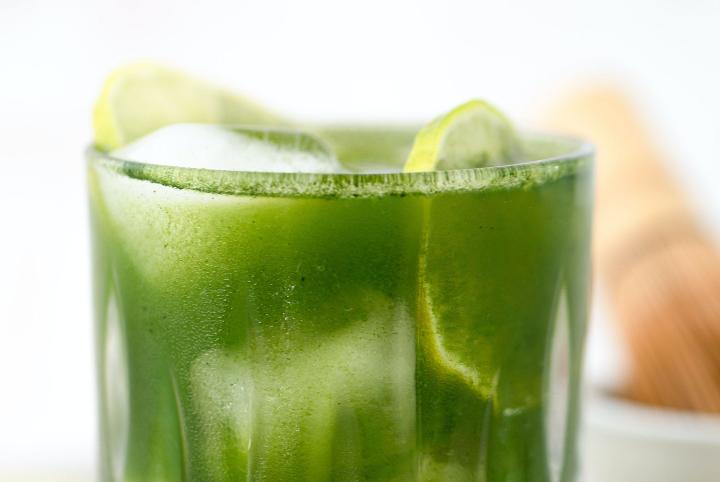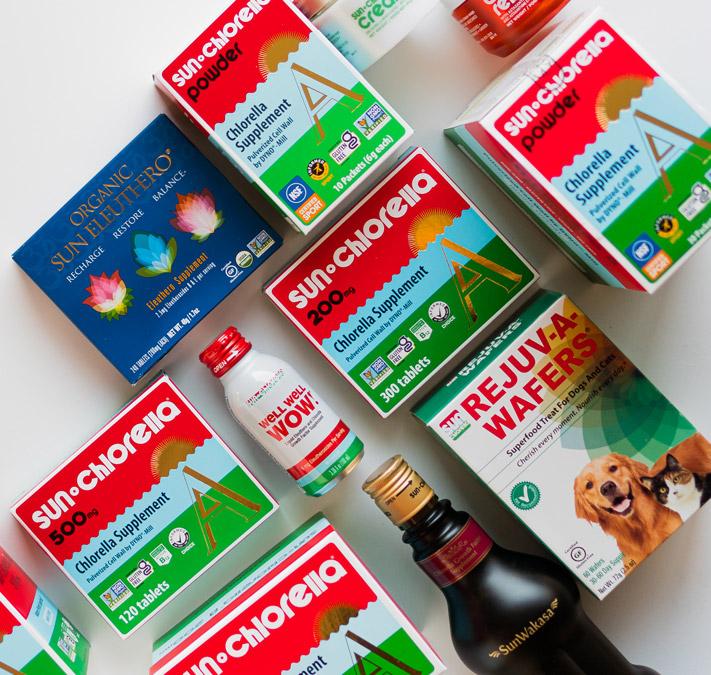Liquid chlorophyll (or “chlorophyll water”) became a viral TikTok wellness trend in 2021. Perhaps you’ve heard of it and even bought a bottle of liquid chlorophyll yourself. When curious viewers asked trendsetters: “What does liquid chlorophyll do?” TikTokers explained that these chlorophyll drops are good for glowing skin, weight loss, and clearing up acne and body odor.
That sounds amazing, doesn’t it? Please don’t punish the messenger, but when something sounds too good to be true … it usually is. Before you rush to grab a bottle of liquid chlorophyll drops (if you haven’t already), it’s important to know a key piece of information that never surfaced on TikTok.
What Does Liquid Chlorophyll Do?
Liquid chlorophyll is an extract of chlorophyll — the antioxidant-rich pigment that gives all green plant foods their color (not to be mistaken for “liquid chlorella,” an algae extract rich in chlorophyll). So, you're ingesting chlorophyll when you eat broccoli, kale, spinach, Swiss chard, chlorella, spirulina, or wheatgrass. The darker green a plant food is, the richer in chlorophyll it will be.
Now, TikTok wasn’t completely wrong. Chlorophyll offers its fair share of health benefits (which we’ll get to in a moment). However, the form of chlorophyll you take will dictate whether you receive the full range.

So, what do chlorophyll drops do? When taking liquid chlorophyll, you’re likely ingesting a semi-synthetic compound called chlorophyllin — a chemical, water-soluble derivative of chlorophyll and not the real, true stuff.
Chlorophyllin is used in supplements instead of true chlorophyll because true chlorophyll is naturally in an oil-soluble form when extracted, which isn’t ideal for supplementation.
If you’re looking for true chlorophyll and want to receive all the health benefits it has to offer, it’s best to get your daily serving of chlorophyll straight from the source by eating dark leafy greens or chlorella, which are both naturally abundant in chlorophyll.
Is Liquid Chlorophyll Good For You? 4 Research-Backed Benefits
As mentioned, if you take liquid chlorophyll, you’re likely getting chlorophyllin and not true chlorophyll — which may not deliver the same health benefits. When you eat plant foods rich in chlorophyll, here are a few benefits you may receive.
1. Possible Reduction in Body Odor
Reducing strong body odor is one of the most common benefits discussed regarding liquid chlorophyll. While more research is needed, a possible explanation for this could be chlorophyll’s magnesium content — as stronger body odor has been linked to magnesium (along with zinc and B12) deficiency.
This is where another important difference between chlorophyllin and true chlorophyll should be noted. When chlorophyll turns into water-soluble chlorophyllin through a processing method called saponification, its chemical structure changes. The magnesium ion in naturally occurring chlorophyll is replaced with a copper ion. This means chlorophyllin is not as rich in magnesium as true chlorophyll — which would be the form most likely to support deodorization in the body.

Studies on whether chlorophyll has deodorizing properties conclude that the sense of smell is highly subjective and fluctuates from one person to the next. (1)
If you’re interested in taking liquid chlorophyll to eliminate body odor, you could conduct your own “study” by taking chlorella (one of nature’s richest sources of chlorophyll) and eating three to five servings of dark green vegetables daily. Then, record your findings after a few weeks! Chances are, you’ll notice more benefits than just smelling fresher.
2. Energy Support
Eating foods rich in chlorophyll may help increase red blood cell production, although more research is needed to support this. When red blood cells are increased, more oxygen can move freely from the lungs to the rest of the body, naturally boosting energy levels.
3. Wound Support
Chlorophyll may have slight antibacterial properties, and research notes that chlorophyll derivatives are cell-stimulating agents, which can help regenerate tissue when applied topically. (2)
Since it’s recommended to get your chlorophyll from leafy green vegetables (unless you can find true chlorophyll in an ointment), increasing your green vegetable intake when you have an injury, skin condition, or lesion may be a great additional support.
4. Digestive Support
Chlorophyll is said to help with digestive function, but research is lacking to determine exactly how. We know that green vegetables are the richest sources of chlorophyll — and the dietary fiber in these vegetables helps waste move through the digestive tract and feeds beneficial gut microbes, which may help reduce occasional bloating or gas.
While chlorophyll is still being investigated for how it supports digestive function, you’ll receive digestive support either way when you ingest chlorophyll from green vegetables.
Liquid Chlorophyll FAQs
Now that you’re equipped with the knowledge to help you answer the question, “What does liquid chlorophyll do?” you can better decide whether to take liquid chlorophyll or get it from leafy green vegetables (or both). But here are a few common FAQs about liquid chlorophyll that we still haven’t answered.
1. Can I take liquid chlorophyll every day?
You can find the FDA's recommendation here for the semi-synthetic compound Chlorophyllin, which states adults and children twelve years of age and over can take 100 to 200 milligrams daily in divided doses, as required.

If you’re taking chlorophyll specifically to control body odor, you can take an additional 100 milligrams if needed. Do not exceed 300 milligrams. For children 12 and under, always consult a doctor.
2. What are the side effects of liquid chlorophyll?
If you're new to taking liquid chlorophyll or any type of green supplement containing chlorophyll (including chlorella), your body may need some time to adjust, especially if you are not used to consuming greens daily. Some temporary side effects can include stomach cramps, nausea, and diarrhea. Therefore, it’s always best to start gradually and slowly work your way up to the daily serving size. Consult a licensed healthcare practitioner before starting any new supplement or health regimen.
3. How fast does chlorophyll work?
As with any supplement, there's no overnight change, miracle “cure,” or miracle “drink.”
However, when you consistently incorporate chlorophyll-rich foods into your diet (like eating veggies or taking chlorella supplements daily), you will gradually notice the difference in your overall health and appearance by naturally incorporating more nutrients.
The Takeaway
Liquid chlorophyll is not true chlorophyll but a water-soluble, semi-synthetic compound called chlorophyllin. Because chlorophyllin has been processed and has a different chemical structure than true chlorophyll, it’s recommended to get your chlorophyll straight from dark, leafy green vegetables and chlorella (one of nature’s richest sources of chlorophyll). Natural sources of chlorophyll possess all of the health benefits this green pigment is known for.
Interested in adding liquid chlorophyll to your diet? We recommend taking chlorella to get true chlorophyll instead. Start here.
Ready to Find Your Chlorella?
Find your best chlorella that fits your lifestyle. Sun Chlorella offers easy-to-take small tablets, larger tablets, and powder form.

What Does Liquid Chlorophyll Do?